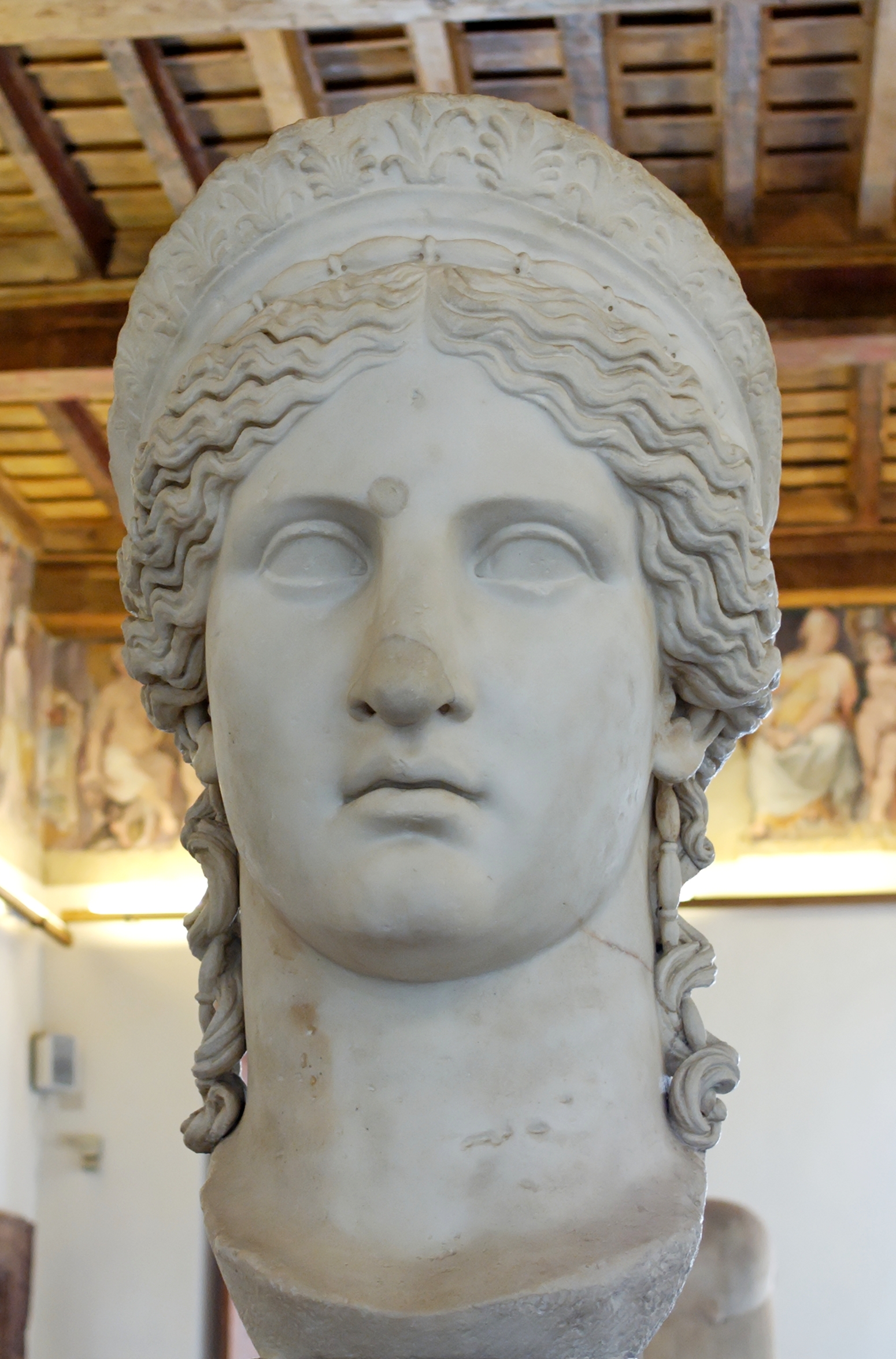Hera Farnese on:
[Wikipedia]
[Google]
[Amazon]
 The Hera Farnese is a type of sculpture of
The Hera Farnese is a type of sculpture of  See also giant statue ''Hera Ludovisi'' (portrait of
See also giant statue ''Hera Ludovisi'' (portrait of
Skulpturhalle Basel
 The Hera Farnese is a type of sculpture of
The Hera Farnese is a type of sculpture of Hera
In ancient Greek religion, Hera (; grc-gre, Ἥρα, Hḗrā; grc, Ἥρη, Hḗrē, label=none in Ionic and Homeric Greek) is the goddess of marriage, women and family, and the protector of women during childbirth. In Greek mythology, she ...
.
Its main example is a 63 cm high Roman marble copy of the 1st century AD of a Greek original of the second half of the 5th century BC, now in the Naples National Archaeological Museum
The National Archaeological Museum of Naples ( it, Museo Archeologico Nazionale di Napoli, italic=no, sometimes abbreviated to MANN) is an important Italian archaeological museum, particularly for ancient Roman remains. Its collection includes wo ...
. It was part of a colossal acrolith
An acrolith is a composite sculpture made of stone together with other materials such as wood or inferior stone such as limestone, as in the case of a figure whose clothed parts are made of wood, while the exposed flesh parts such as head, hand ...
ic statue, and shows the goddess with a central parting and wearing a diadem
A diadem is a type of crown, specifically an ornamental headband worn by monarchs and others as a badge of royalty.
Overview
The word derives from the Greek διάδημα ''diádēma'', "band" or "fillet", from διαδέω ''diadéō'', " ...
. It was named Hera by the first archaeologists to see it, due to its severe style and unsmiling expression, and they also interpreted these features as making it a Roman copy of an original by Polycleitus.
As part of the Farnese collection
The classical sculptures in the Farnese Collection, one aspect of this large art collection, are one of the first collections of artistic items from Greco-Roman Antiquity. It includes some of the most influential classical works, including the sc ...
it was brought to Naples in 1844 by German archaeologist Heinrich von BrunnAlfred Emerson, 'Heinrich von Brunn', The American Journal of Archaeology and of the History of the Fine Arts, Vol. 9, No. 3 (Jul., 1894), pp. 370
 See also giant statue ''Hera Ludovisi'' (portrait of
See also giant statue ''Hera Ludovisi'' (portrait of Antonia Minor
Antonia Minor (31 January 36 BC - 1 May 37 AD) was the younger of two surviving daughters of Mark Antony and Octavia Minor. She was a niece of the Emperor Augustus, sister-in-law of the Emperor Tiberius, paternal grandmother of the Emperor Caligu ...
) in Palazzo Altemps, Rome.
Notes
Skulpturhalle Basel
Hera
In ancient Greek religion, Hera (; grc-gre, Ἥρα, Hḗrā; grc, Ἥρη, Hḗrē, label=none in Ionic and Homeric Greek) is the goddess of marriage, women and family, and the protector of women during childbirth. In Greek mythology, she ...
Farnese
Collections of the National Archaeological Museum, Naples
Roman copies of 5th-century BC Greek sculptures
{{Italy-sculpture-stub